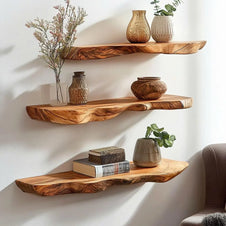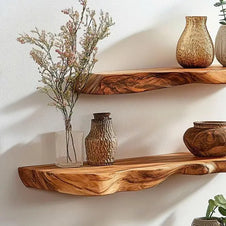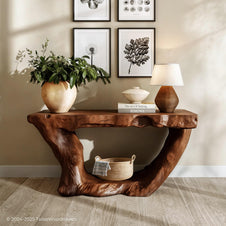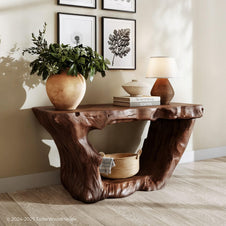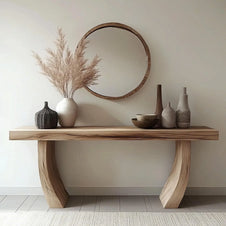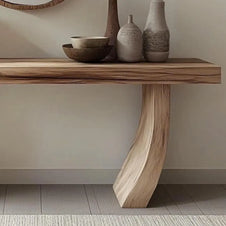Learning how to carve wood art isn’t just about using sharp tools - it's about unlocking a creative process rooted in patience and craftsmanship. Whether you’re carving a name plaque or shaping a wall panel, the practice blends precision with imagination. This guide will walk you through all the essentials, from selecting tools to mastering techniques and knowing exactly how to carve wood art with purpose and flair. Now let’s dive in to become a real artisan!
Why Learn How to Carve Wood Art?
Wood carving is one of the oldest and most rewarding forms of craftsmanship. In a world filled with mass-produced decor, handmade wooden art stands out for its character, warmth, and timeless beauty. Learning how to carve your own designs opens up endless opportunities - whether you're decorating a personal space, crafting a unique gift, or simply enjoying a new hobby.
Beyond aesthetics, carving offers meditative focus, a stronger connection to nature, and even income potential for skilled makers. Unlike painting or drawing, the texture and depth of wood art bring a tangible richness to any home or workspace.
When you carve your own designs, you gain creative freedom. You’re no longer limited to store-bought shapes or trends. Instead, you create meaningful wall art that reflects your story, culture, or style.
Focus and Fulfillment
Learning how to carve wood art isn’t just about results - it’s about the process. The act of cutting wood by hand can be deeply calming. For many, it offers stress relief and mental clarity, much like journaling or painting.
Each time you learn how to carve wood, you also build skills like patience, precision, and spatial thinking. The more you carve, the more confident and creative your hands become.
Simple Tools, Big Rewards
One of the best things about learning how to carve wood art is that it doesn’t require fancy gear. A basic set of tools and a quiet space are enough to get started. It’s an affordable, low-barrier way to explore creativity.
Over time, you can upgrade your workspace and carve more ambitious designs - maybe even turn it into a small business or gifting hobby.
Decor with Meaning
Hand-carved wood art adds warmth and personality to any space. Whether you hang it in a rustic cabin or a modern apartment, it becomes a focal point that draws attention and tells a story.
You’re not just learning how to carve wood art or decorate a wall - you’re building something that lasts.
What Types of Wood Art Can You Carve?
Before diving into how to carve wood art, it’s helpful to know what kinds of creations are possible. This opens your imagination and helps you set clear project goals.
Depending on your skill level and style, you can carve:
-
Relief panels with floral or natural scenes
-
Wall signs with names, inspirational quotes, or house numbers
-
Layered geometric art that adds texture to minimalist interiors
-
Functional items like coat racks, candle holders, or shelves
-
Abstract compositions that explore shape and negative space

For real-world inspiration, check out handcrafted designs like these carved wood wall decor panels that reflect both tradition and modernity.
Knowing what you want to create helps you learn how to carve wood art more intentionally and avoids unnecessary trial and error.
Essential Tools & Materials for Carving
Before learning how to carve wood art, you'll need the right tools and materials. While the list can grow over time, beginners can start with a basic yet effective setup.
Carving Knives, Gouges, and Chisels
A sturdy carving knife is essential for detailed work, such as shaping outlines and cutting fine textures. Gouges - U-shaped tools - are perfect for scooping out wood in rounded curves, while chisels come in handy for making flat cuts and removing large sections of material.
Each tool serves a distinct purpose, and as you grow in skill, you’ll learn how to combine them efficiently.
Sharpening Tools & Maintenance
Sharp tools are not just safer – they make carving smoother and more enjoyable. If you’re serious about learning how to carve wood art, proper tool maintenance is essential. Use sharpening stones, honing compounds, or stropping belts to maintain a keen edge. Always check your blades before and after each session to ensure clean, accurate cuts and prevent injury.
Choosing the Right Wood
Softwoods like basswood, butternut, or pine are ideal for beginners due to their forgiving grain. Hardwoods like oak or walnut, while beautiful, are harder to carve and better suited for experienced hands. Make sure your wood is dry and free from knots or cracks for the best results.
Step-by-Step Process: How to Carve Wood Art
Now that you're equipped, it’s time to start carving. Below is a clear, step-by-step process that makes learning how to carve wood art approachable and safe.
Design and Sketch
Before making any cuts, plan your design. Use a pencil or transfer paper to sketch directly onto the wood. Start simple - a leaf, wave pattern, or basic geometric motif. Having a clear outline prevents mistakes and helps you visualize the final piece. If you're inspired by organic, nature-based motifs, designs like these minimalist wooden wall panels offer a great aesthetic direction.

Secure Your Wood
Safety comes first. Clamp your wood piece onto a stable table or workbench using a vise or bench dog. A steady workspace reduces the risk of slips and accidents, especially when applying force.
Make Basic Cuts: Push, Pull, and Stop
Begin by making push cuts (cutting away from your body) and pull cuts (toward your body with control). Use stop cuts to prevent over-carving by creating boundaries around your design. Always carve with the grain to avoid splintering. For visuals and beginner demos, check out this helpful carving techniques guide by BeaverCraft Tools.
 If you're carving large surface areas and want to see how relief carving looks in modern decor, Tailor Wood Haven's oversized wood wall hangings can be a source of visual reference and motivation.
If you're carving large surface areas and want to see how relief carving looks in modern decor, Tailor Wood Haven's oversized wood wall hangings can be a source of visual reference and motivation.
Relief or In-the-Round Techniques
Relief carving creates a raised effect on flat wood, ideal for wall art. When learning how to carve wood art, most beginners start with low relief because it teaches depth control and tool direction without the complexity of 3D sculpture.
 Choose your style based on the final display you want to achieve. For instance, many artisans start with shallow relief before attempting fully sculpted pieces. If you're interested in something more geometric or structured, you might enjoy the clean lines and contrast of Tailor Wood Haven's modern wooden wall art.
Choose your style based on the final display you want to achieve. For instance, many artisans start with shallow relief before attempting fully sculpted pieces. If you're interested in something more geometric or structured, you might enjoy the clean lines and contrast of Tailor Wood Haven's modern wooden wall art.
Sand and Finish
Once you’re satisfied with your carving, use fine-grit sandpaper to smooth out rough edges. For protection and aesthetics, seal your work with natural oil, beeswax, or wood finish. This enhances the grain and ensures longevity.
Tips & Safety for Beginners
Even the most beautiful carving is meaningless if it leads to injury or frustration. Mastering how to carve wood art is a lifelong pursuit - but staying safe and consistent is what enables lifelong creation.
Tool Care and Sharpening
Sharp tools require less force and create cleaner results. Dull blades are not only ineffective - they’re dangerous. Always maintain a consistent sharpening routine using stones or stropping leather.
Protective Gear and Workspace Setup
Wear cut-resistant gloves and eye protection. Ensure your workspace has strong lighting and proper ventilation, especially if you're working with treated or aromatic woods.
Start Small, Practice Often
Don’t rush into complex carvings. Begin with simple projects like:
With practice, your hands will develop confidence - and your creativity will flourish.
Common Mistakes to Avoid When Carving Wood Art
Even seasoned carvers can make mistakes. To avoid unnecessary frustration while learning how to carve wood art, be mindful of the following pitfalls:
-
Choosing overly hard or wet wood, which can dull your tools or crack mid-carving
-
Carving against the grain, leading to splinters and tear-outs
-
Skipping the sketch phase, causing proportion or alignment errors
-
Failing to sharpen tools, making cuts unsafe and imprecise
-
Applying finishes too soon, which can lock in rough textures or dust
By recognizing these common issues, the journey of learning how to carve wood art of yours will improve your technique faster, and you will enjoy the process more fully.
FAQs
-
How to carve wood art with a knife?
Start with soft wood like basswood, and use a sharp carving knife with a comfortable grip. Sketch your design, then make small, controlled cuts following the grain. This is one of the simplest ways to learn how to carve wood art, especially for beginners.
-
How to carve wood by hand?
Hand carving requires only basic tools: a knife, gouges, and sandpaper. Secure your wood, trace your pattern, and begin carving with steady hands. Many artisans prefer this slow, mindful process when exploring how to carve wood naturally.
-
What is the best way to carve designs in wood?
The best method depends on your project. For detailed patterns, use relief carving with knives and gouges. Always carve with the grain, and make stop cuts to control depth. This technique offers the most precision when learning how to carve wood art for decorative use.
Final thought
Learning how to carve wood art is a deeply satisfying journey - from your first sketch to the final sanded edge. Whether you're carving for peace of mind, personal passion, or beautiful home decor, this craft offers endless room for growth and inspiration.
Now that you know how to carve wood art, why not take the next step? Browse Tailor Wood Haven’s exclusive collection and discover how timeless wood artistry can elevate your space today.

